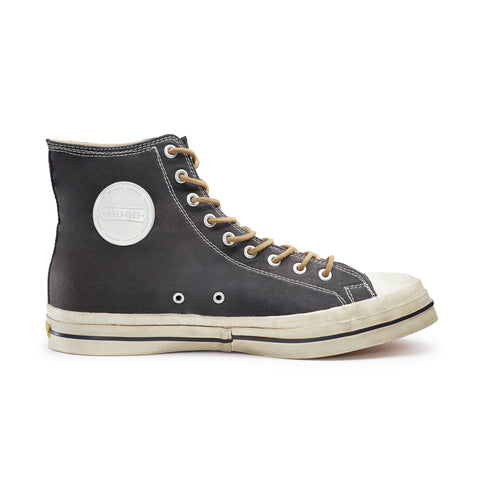1941
A Call to Arms – The Japanese attack on the U.S. Pacific Fleet at Pearl Harbor Naval Base on Dec. 7, 1941 thrust the United States into World War II. At the start of the war, Hood’s executive management team made a crucial strategy decision: They would focus on the company’s strengths – footwear and related rubber products – and avoid the temptation of lucrative wartime defense contract opportunities.
From 1941 to 1945, Hood was enlisted by the U.S. Armed Forces to manufacture many types of rubber products, including lightweight canvas Army boots, U.S. Navy flight boots, truck tires, airplane deicers, and even athletic shoes. By 1942, manufacturing in the Hood plant had nearly doubled in volume compared to depression-era levels.
A problem in the supply chain, however, threatened to derail Hood’s war support efforts. About 95% of American rubber manufacturers’ raw rubber supply was imported from plantations in Southeast Asia. With the Japanese sinking of the prize British warships Prince of Wales and Repulse, which had been defending the colonia shipping lanes, the majority of the United States crude rubber supply was cut.
 Contract #W19-074 QN446 Athletic Shoe High. Made by Hood for the U.S. Army in 1945
Contract #W19-074 QN446 Athletic Shoe High. Made by Hood for the U.S. Army in 1945
The U.S. government acted with unprecedented speed and thoroughness, nationalizing and rationing the country’s crude rubber supply. The creation of a synthetic rubber industry began in earnest, and in order to reduce the demand for civilian footwear, Hood refrained from promoting consumer footwear sales.
From 1943 to 1945, Hood and B.F. Goodrich participated in a full-scale advertising campaign to reinforce the government’s conservation orders while reminding the American public of the company’s war effort and prewar
experience in making high-quality footwear and rubber goods.


